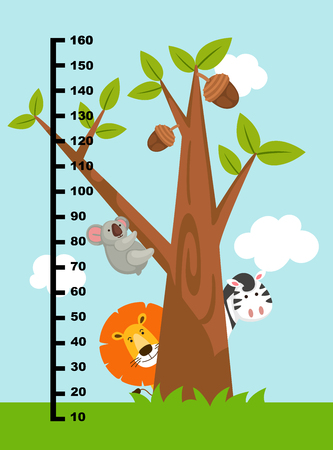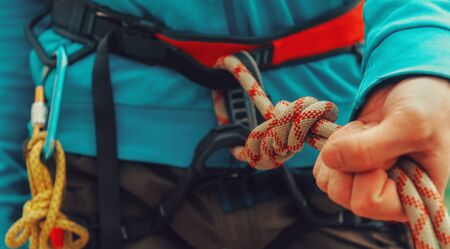Understanding Local Wildlife
Before you set up camp, it’s important to know what animals might be sharing the outdoors with you. The United States is home to a wide variety of wildlife, and each region has its own unique species and behaviors. Being aware of these differences can help you prepare for a safe and enjoyable camping experience.
Common Wildlife by Region
| Region | Common Animals | Notable Behaviors |
|---|---|---|
| Western US (Rockies, Sierra Nevada) | Black bears, grizzly bears, mountain lions, deer, raccoons | Bears are attracted to food smells; mountain lions are elusive but may roam near campsites at dusk or dawn |
| Northeast & Great Lakes | Black bears, moose, foxes, skunks | Bears often visit campsites for unsecured food; moose can be protective if approached too closely |
| Southeast (Appalachians, Smoky Mountains) | Black bears, wild boar, snakes (including venomous types), raccoons | Bears are skilled climbers; snakes may seek warmth near tents or trails |
| Southwest & Deserts | Coyotes, bobcats, rattlesnakes, scorpions, javelina | Coyotes may scavenge for scraps; rattlesnakes prefer hiding under rocks or logs during the day |
| Pacific Northwest & Alaska | Black bears, brown (grizzly) bears, wolves, eagles | Bears fish in rivers and often patrol campsites for leftovers; wolves typically avoid humans but may be heard howling at night |
Why Animal Behavior Matters at Campsites
Understanding how local animals behave helps you know what precautions to take. For example:
- Bears: Have an excellent sense of smell and can be attracted from miles away by food odors. They may approach campsites if food is not stored properly.
- Raccoons and Skunks: These smaller critters are notorious for raiding coolers and trash cans left unsecured overnight.
- Snakes: Especially in warmer climates, snakes may curl up under tents or camping gear seeking shade or warmth.
- Larger mammals like moose or elk: While usually not aggressive, they can become dangerous if startled or if their young are nearby.
Quick Tips for Recognizing Wildlife Activity Nearby
- Look for tracks or scat around your site before setting up camp.
- If you hear rustling at night, use a flashlight to check—never investigate alone in the dark.
- Avoid leaving scented items like toiletries out in the open.
Your First Step: Do Your Homework!
Always research the specific area where youll be camping. National park websites and ranger stations offer updates on recent animal sightings and safety tips tailored to local conditions. Being informed is your first line of defense when it comes to coexisting peacefully with wildlife during your adventure.
2. Bear-Proofing Your Campsite
Why Bear-Proofing Matters
Bears have an incredible sense of smell and are naturally curious. If they find food or scented items at your campsite, they’ll keep coming back—putting you and the bear at risk. Proper bear-proofing isn’t just about following rules; it’s about keeping everyone safe and respecting wildlife.
Practical Steps to Secure Food, Trash, and Scented Items
1. Store Food Safely
- Bear-Resistant Containers: Use approved bear canisters or boxes if available. These are designed to keep bears out.
- Hang Your Food: In areas without bear containers, hang food at least 10 feet off the ground and 4 feet away from any tree trunk or branch.
- Avoid Keeping Food in Tents: Never store food, snacks, or flavored drinks inside your tent—even for a quick nap!
2. Manage Trash and Waste
- Packed-In Means Packed-Out: Bring all your trash home with you. Don’t leave anything behind, even biodegradable scraps like apple cores.
- Use Bear-Proof Trash Receptacles: If your campsite has them, always use these containers for any waste.
- Double-Bag Trash: Keep smells contained by double-bagging garbage before storing it in a bear-resistant container or hanging it up like you would with food.
3. Control Scented Items
- Scented Toiletries: Toothpaste, deodorant, sunscreen, and even lip balm should be stored with your food—not in your tent or backpack.
- Laundry and Clothes: If you cook over a fire or spill food on your clothes, change before bed and store those clothes safely away from sleeping areas.
Quick Reference Table: What Goes Where?
| Item | Where to Store | Best Practice |
|---|---|---|
| Food & Snacks | Bear canister/box or hung properly | Away from tent; never inside sleeping area |
| Scented Toiletries (toothpaste, lotion) | With food storage (canister/hung) | Treat as you would food items |
| Campsite Trash/Waste | Bear-proof bin or double-bagged & hung | Packed out after trip; don’t bury or burn |
| Cookware & Utensils | Cleaned & stored with food items | No food residue left outside overnight |
| Clothes Worn While Cooking/Eating | Away from tent; stored with food/toiletries | Change before sleeping; avoid scent transfer |

3. Safe Food Storage Techniques
Keeping your food safe from wildlife is one of the most important steps you can take to protect both yourself and the animals while camping in the U.S. This section covers three common methods: bear canisters, bear hangs, and established food lockers. Each method helps keep your campsite secure and reduces the chances of unwanted animal encounters.
Bear Canisters
Bear canisters are hard-sided containers designed to be bear-resistant. Theyre required in many national parks and forests where bears are active. Simply place all scented items—food, toiletries, even trash—inside, lock it up, and store the canister at least 100 feet away from your tent. Most canisters are designed so that bears cant open them, but you still need to follow instructions carefully for maximum safety.
Tips for Using Bear Canisters Effectively
- Pack only what fits; prioritize foods that are compact.
- Always close and lock the canister after each use.
- Place the canister on level ground, away from cliffs or water sources (bears may try to roll it).
Bear Hangs
If you’re camping in an area without strict regulations or where canisters aren’t required, a bear hang is another effective option. This involves suspending your food bag from a tree branch, out of reach from both bears and smaller critters. The goal is to hang it at least 10-15 feet off the ground and 4-6 feet away from the trunk.
Steps for Setting Up a Bear Hang
- Find a sturdy branch at least 15 feet high.
- Tie a rock or stick to one end of your rope and toss it over the branch.
- Attach your food bag to the rope and raise it until its out of reach.
- Tie off the rope securely on another tree or object.
Bear Hang vs Bear Canister Comparison
| Method | Pros | Cons |
|---|---|---|
| Bear Canister | Required in many parks; easy to use; highly effective | Bulky; adds weight; limited space inside |
| Bear Hang | Lighter; flexible capacity; no extra gear needed | Takes practice; not always possible if trees arent suitable |
Established Food Lockers
Many American campgrounds provide metal food storage lockers, also called bear boxes. These are shared, secure lockers located near campsites or parking areas. Theyre big enough for coolers and all your scented items. Always close and latch the locker completely after each use, even if you step away just for a minute.
- Check with park staff about availability before you arrive.
- Don’t leave anything outside overnight—even wrappers or empty containers attract wildlife.
- If you’re traveling with kids or pets, teach them not to play inside or around lockers for safety reasons.
Choosing the Right Method for Your Trip
The best food storage technique depends on your destination, local regulations, group size, and available resources. Check campground rules ahead of time and pack accordingly. Using these methods keeps everyone safer—and helps preserve wild spaces for future campers!
4. Minimizing Animal Attractants
Keeping wildlife away from your campsite starts with making your area less appealing to animals. Bears and other critters have an incredible sense of smell, so even the smallest crumbs or scented items can draw them in. Here are some friendly, practical tips for reducing odors and minimizing attractants at your site.
Tips for Reducing Odors
- Store food properly: Always use bear-resistant containers or designated food lockers when available. Never leave food unattended or in your tent.
- Separate eating and sleeping areas: Set up your cooking and eating area at least 200 feet away from your tent to keep lingering smells away from where you sleep.
- Pack out trash: Bring resealable bags or odor-proof trash bags for all waste, including wrappers and food scraps. Dispose of trash in designated bear-proof bins if available.
How to Clean Cookware
- Wash dishes immediately: After eating, clean all cookware, plates, and utensils right away using biodegradable soap at least 200 feet from streams or lakes.
- Strain dishwater: Strain out food particles and pack them out with your trash. Scatter strained dishwater far from camp to avoid concentrated scents.
- Air dry only: Let cookware air dry completely before storing it back in your vehicle or bear box—never store damp or dirty items.
Cookware Cleaning Checklist
| Step | Why It Matters |
|---|---|
| Scrape off leftover food | Avoids lingering smells that attract wildlife |
| Wash with unscented, biodegradable soap | Keeps scents low and is eco-friendly |
| Rinse thoroughly | No residue means fewer odors |
| Pack out food bits | No crumbs left behind for animals to find |
| Dry completely before storing | Damp gear can still smell like food to wildlife |
Managing Personal Hygiene at Your Site
- Avoid scented products: Choose fragrance-free soaps, lotions, and deodorants while camping to reduce the chance of attracting animals.
- Brush teeth away from camp: Spit toothpaste into a sealed bag or well away from both your tent and water sources.
- Store toiletries safely: Keep all hygiene items (toothpaste, sunscreen, bug spray) in your bear canister or locker with your food.
- Launder clothing worn while cooking: If possible, change out of clothes used for cooking before sleeping. Store them with your food—not in your tent!
Your Wildlife-Safe Hygiene Routine
| Hygiene Task | Campsite Best Practice |
|---|---|
| Washing hands/face | Use unscented soap; do it away from sleeping & eating areas |
| Tooth brushing | Packs out waste; never spit near camp or water sources |
| Lotion/sunscreen application | Select fragrance-free options; store with food/toiletries after use |
| Laundry (if needed) | Launder away from camp; keep “food-smell” clothes with food storage overnight |
With these mindful habits, you’ll help protect yourself—and local wildlife—for a safer, more enjoyable camping experience.
5. What To Do If You Encounter Wildlife
Coming across wildlife at your campsite can be thrilling, but it’s important to respond in a way that keeps you and the animals safe. Here’s how to handle encounters with some of the most common critters you might meet while camping in the U.S.
Stay Calm and Assess the Situation
Your first reaction might be fear or excitement, but try to stay calm. Don’t run or make sudden movements—most animals prefer to avoid humans if given the chance.
Common Wildlife Encounters and How to Respond
| Animal | What To Do | What NOT To Do |
|---|---|---|
| Bear | Stand tall, speak calmly, back away slowly. If it approaches, make yourself look larger, wave your arms, and make noise. Carry bear spray if you’re in bear country. | Don’t run, don’t turn your back, don’t leave food out as a distraction. |
| Raccoon | Make noise to scare it off (clap hands, shout). Secure all food and trash immediately. | Don’t feed it, don’t approach—even if it seems friendly. |
| Coyote | Stand tall, maintain eye contact, make loud noises. Pick up small children or pets. | Don’t run or try to chase the coyote away by yourself. |
| Snake | Freeze, slowly move away from its path. Watch where you step and reach. | Don’t try to touch or move the snake. |
| Deer/Elk/Moose | Give them plenty of space. Back away quietly if they seem agitated. | Don’t try to approach for photos or feeding—mothers are especially protective. |
If an Animal Enters Your Campsite
- Stay inside your tent or vehicle if possible.
- If outside: Keep your distance and allow the animal a clear escape route.
- Avoid direct eye contact with predators like bears or coyotes—it can be seen as a threat.
- If you need help: Use a whistle or air horn to alert others nearby.
A Few More Tips for Safe Wildlife Encounters:
- Keep pets on a leash and kids within sight at all times.
- Avoid leaving scented items out—this includes toiletries as well as food!
- If bitten or scratched, seek medical attention promptly; wild animals can carry diseases.
- Always follow posted guidelines and local ranger advice about wildlife activity in your area.
6. Camping Ethically: Respecting Wildlife and Nature
When you’re camping in the great outdoors, it’s important to remember that you’re a guest in the home of many wild animals. Camping ethically means not only keeping yourself safe from wildlife like bears, but also making sure your actions protect those animals and their natural environment. By following the Leave No Trace principles, respecting local rules, and learning how to coexist peacefully with all creatures, you can enjoy nature responsibly and help preserve it for everyone.
Promoting Leave No Trace Principles
The Leave No Trace (LNT) principles are a set of easy-to-follow guidelines that help minimize your impact on the environment. Here’s a quick overview:
| Leave No Trace Principle | How It Helps Wildlife |
|---|---|
| Plan Ahead and Prepare | Reduces risky encounters by knowing wildlife activity and rules before arrival. |
| Travel and Camp on Durable Surfaces | Keeps animal habitats undisturbed by avoiding sensitive areas. |
| Dispose of Waste Properly | Prevents animals from eating trash or becoming dependent on humans for food. |
| Leave What You Find | Protects plants and animal shelters, maintaining a healthy ecosystem. |
| Minimize Campfire Impact | Avoids habitat destruction and keeps animals safe from fire hazards. |
| Respect Wildlife | Helps animals stay wild by observing them from a distance and not feeding them. |
| Be Considerate of Other Visitors | Makes camping enjoyable for everyone while preventing animal stress caused by noise or crowds. |
Coexisting Peacefully With All Animals
Wildlife safety isn’t just about big animals like bears; smaller creatures such as raccoons, squirrels, birds, and insects also play important roles in the ecosystem. Here are some ways to peacefully share space with them:
- Secure Your Food: Use bear-proof containers or lockers for all snacks and meals, even if you don’t see bears around. Many small animals are clever at getting into bags or coolers left out overnight.
- No Feeding Wildlife: Feeding wild animals may seem harmless or even fun, but it teaches them to rely on people, which can lead to dangerous situations for both you and the animal.
- Observe from Afar: Use binoculars or cameras with zoom lenses to watch wildlife without disturbing their natural behavior.
- Keep Pets Leashed: If pets are allowed at your campsite, always keep them leashed. This protects both local wildlife and your furry friend.
- Avoid Strong Scents: Perfumes, scented lotions, or even some bug sprays can attract curious critters. Choose unscented products when possible.
Respecting Local Regulations
Parks, forests, and campgrounds often have specific rules designed to protect both visitors and native species. Always take time to review posted signs or talk with rangers about current wildlife activity in the area. Some common regulations include:
- Bearing food storage requirements: Some parks require use of approved bear canisters or lockers for all food and scented items.
- Campsite placement: Stay within designated areas to avoid damaging fragile habitats or disturbing animal nesting grounds.
- Packing out waste: In some places, you must pack out all trash—including biodegradable items like apple cores—to keep the area clean for wildlife.
- No off-trail hiking: Sticking to marked trails helps prevent erosion and protects plant life that animals depend on for shelter and food.
Your Role in Protecting Wildlife—Every Action Counts!
Caring for the outdoors is easier than you might think. By sticking to these simple steps—following Leave No Trace principles, coexisting respectfully with all animals, and honoring local guidelines—you help keep nature wild and beautiful for everyone who comes after you. And remember: every little bit helps, whether it’s double-checking your trash or just quietly appreciating a deer from afar!


